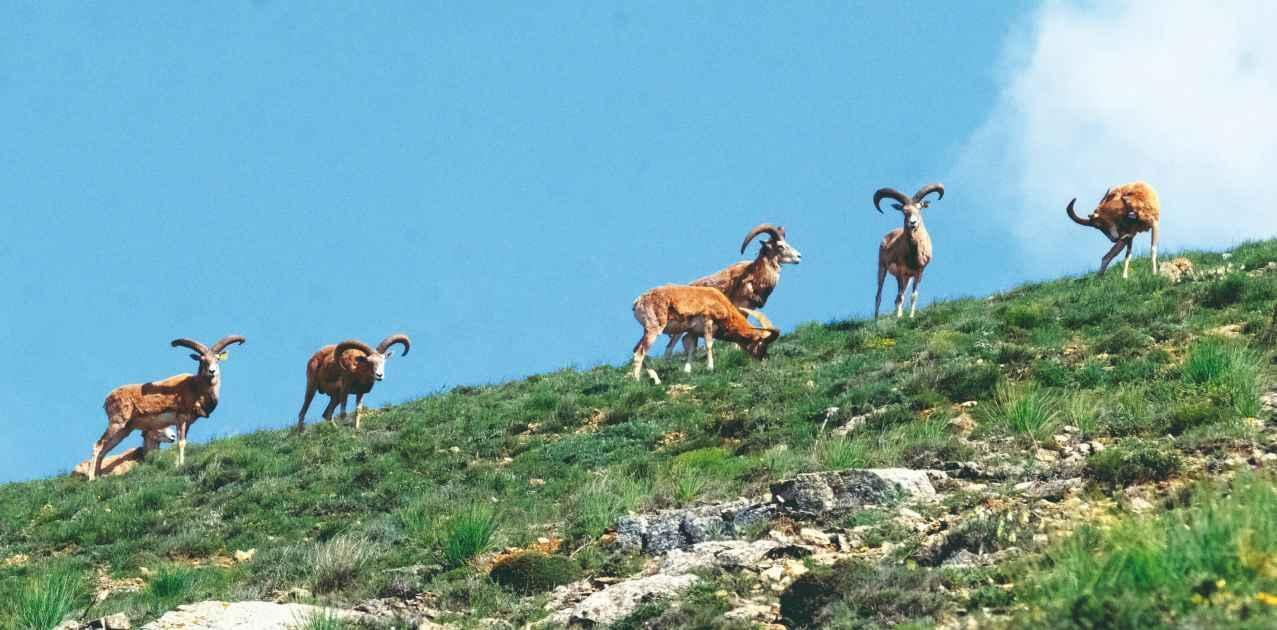
Endangered Anatolian mountain sheep, released to nature within the scope an ecological project in the central Anatolian province of Kırşehir, have successfully adapted to natural life, giving the authorities hope for new environmental projects for endangered species.
It was observed with the camera traps installed that the mountain sheep, which had been placed in their new habitats under the coordination of the Nature Conservation and National Parks (DKMP), and had been being followed for a year, were not harmed or died, and they got used to the living conditions, said the authorities.
The unusable fountains on Mount Kervansaray in Kırşehir, where they had been released, were made usable before the animals arrived.
Fodder and various materials had been left in certain areas for the animals that would have difficulty in finding food in the harsh winter conditions.
The moments when Anatolian mountain sheep ate the fodder left in the nature and the images showing they wandered around in a flock were also captured by the cameras.
“In order to be used in the monitoring of 28 mountain sheep placed in the field, data has been obtained for a period of up to six months from each of the six collars attached to the animals,” said Hasan Tezer, the provincial director of DKMP in Kırşehir.
“Due to the interruption of the data or the falling of the collar, monitoring couldn’t be performed with the collars.”
For this reason, in the next monitoring and follow-up period, field observations and the number of camera traps will be increased, Tezer said.
“In order to keep the shepherd dogs under control, especially in the areas used by the mountain sheep during the birth period, studies will be focused on informing the herd owners and shepherds,” the expert added.
The efforts to control the extinction of Anatolian mountain sheep, which started towards the end of the 1960s, have begun to bear fruit in recent years with production and natural habitat creation activities.
Anatolian mountain sheep, whose reproduction processes had been carried out in the central Anatolian province of Konya, had been released to nature to adapt to the wild environment.
Mucur district of Kırşehir was chosen as the place to host this work, which started in the central Anatolian province of Karaman and continued in the eastern province of Kahramanmaraş, the central Anatolian provinces of Eskişehir and Afyon.
“In the 1960s, there were only 30 Anatolian mountain sheep, but the country raised these animals in five special zones,” said İsmail Üzmez, the head of DKMP, adding that they are an institution that protects, increases, monitors the biodiversity in Türkiye.
The work on the Anatolian mountain sheep is part of a project called “Noah’s Ark,” which lists animals and plants across the country.
“We have a database of all living things in all 81 provinces. We know where the endangered plants or animals are, and we monitor them all,” Üzmez added.
Last year, a local court has issued a stay of execution upon an appeal by the Turkish Vegan Association regarding a tender opened by the Agriculture and Forestry Ministry that would have allowed the hunting of Anatolian mountain sheep, a species unique to Türkiye.
Tezer had previously stated that Anatolian mountain sheep are under protection and in case of illegal hunting, a compensation fee of 267,000 Turkish lira ($16,000) and an administrative fine will be imposed.
The Anatolian mountain sheep is one of the two wild sheep species in Türkiye. The other, which is seen in eastern Anatolia, migrates to Iran during the winter months and comes back to Anatolia in the spring. Anatolian mountain sheep live in Anatolia all year round.